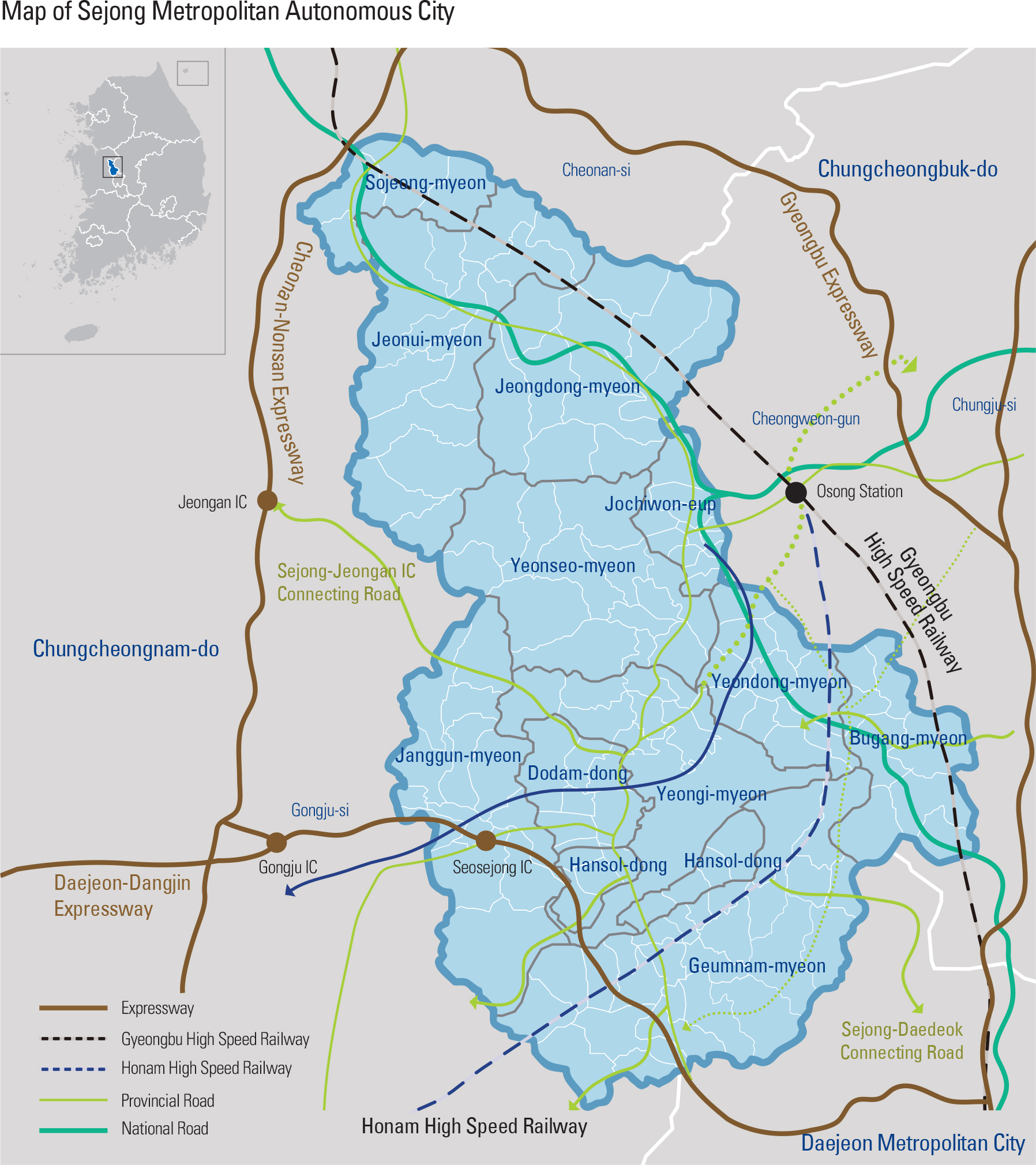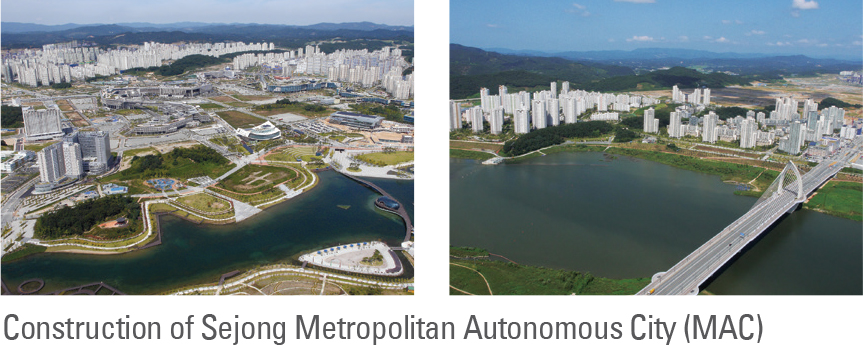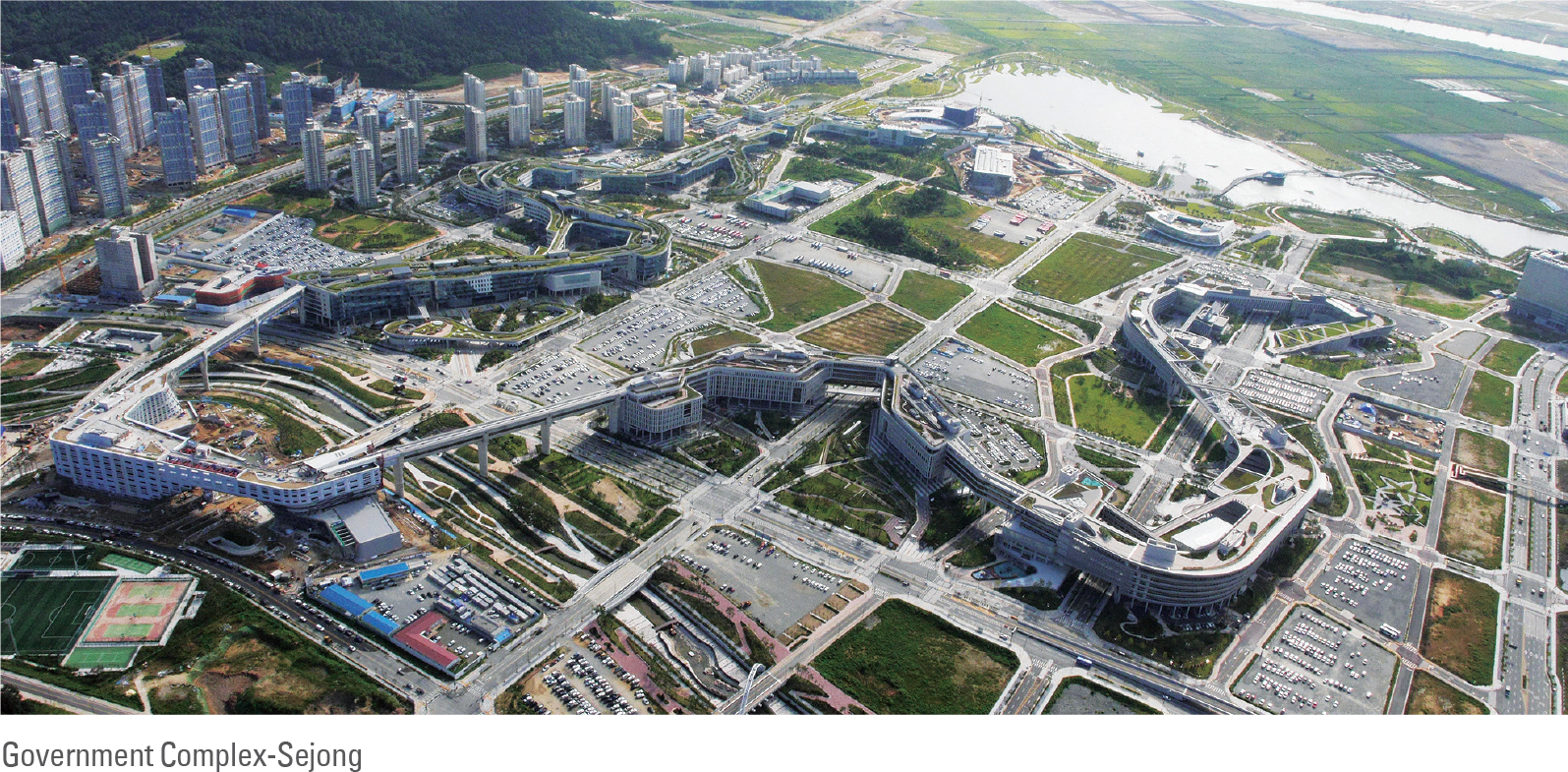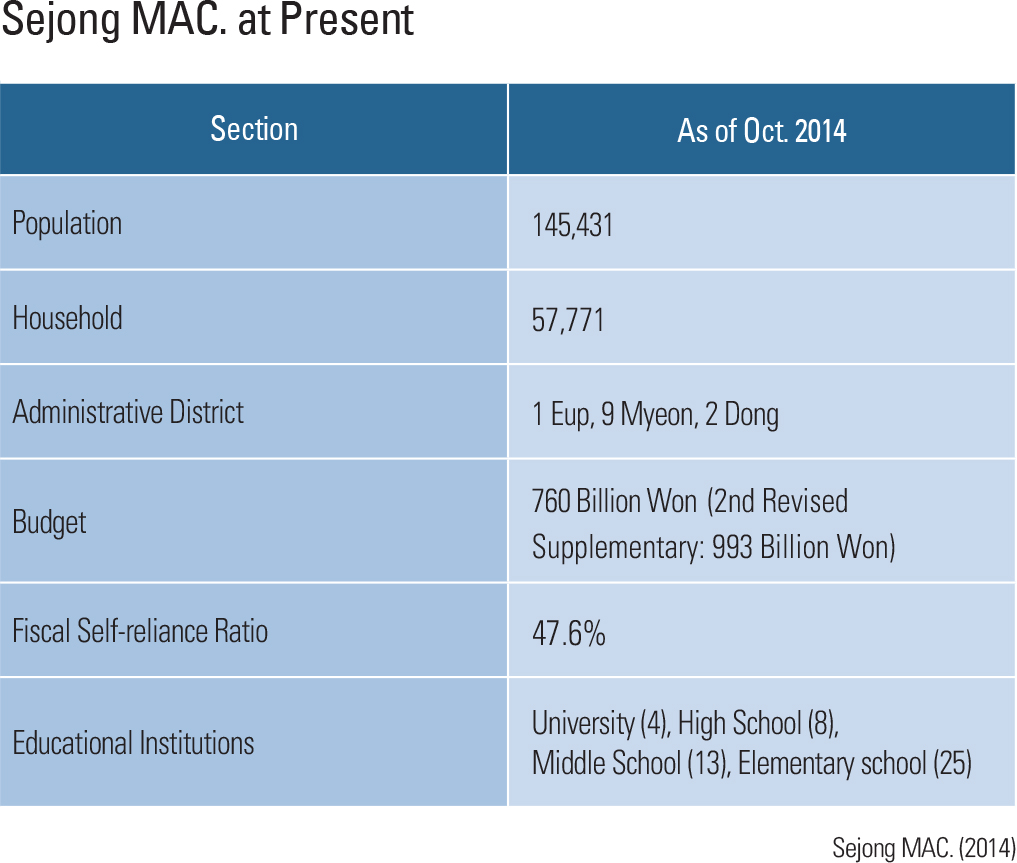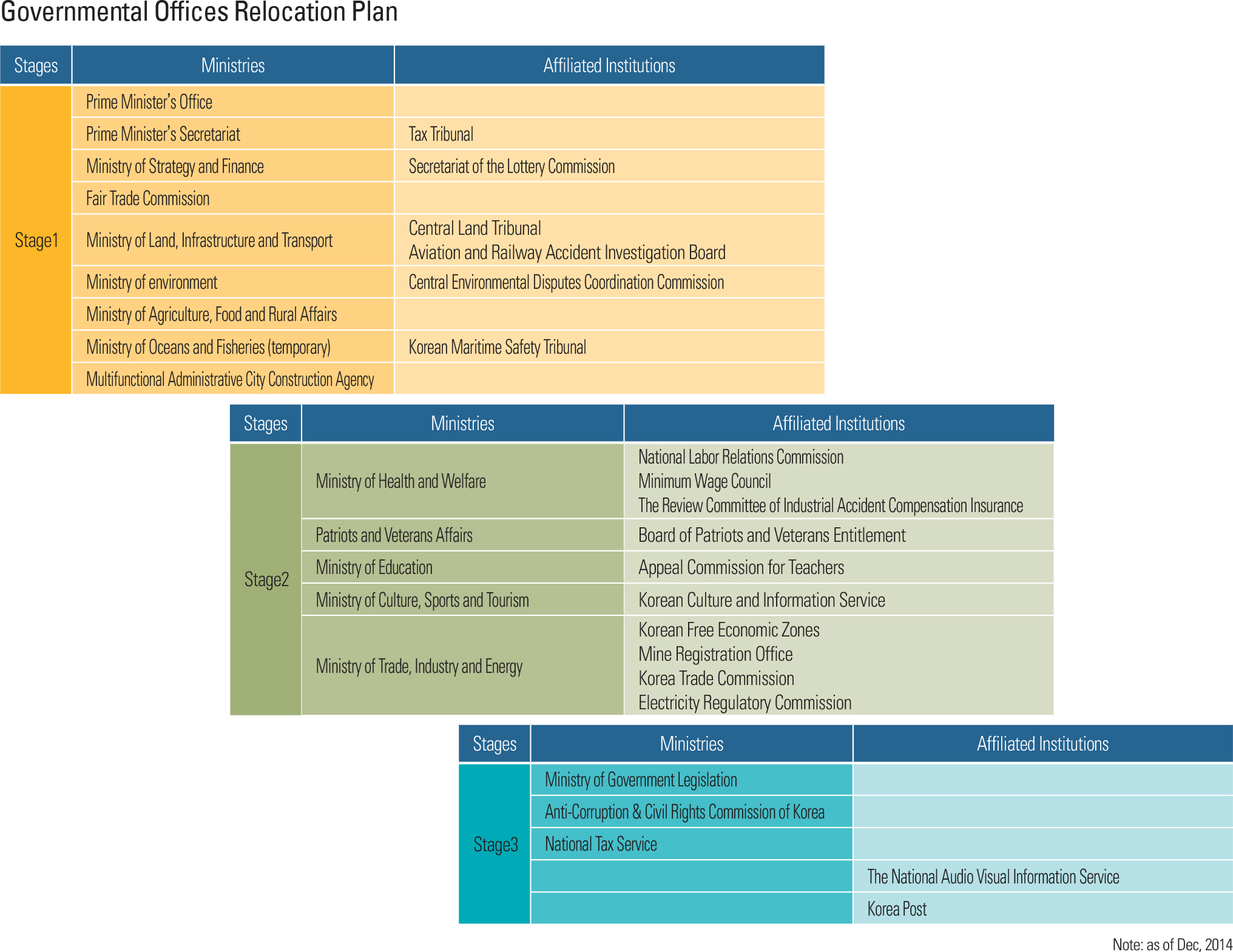Korea has achieved rapid economic growth since the 1960s, and one of the factors of its success has been a state-led development plan that controlled the speed and direction of industrialization and urbanization. The National Development Plan and a five-year Economic Development Plan were representative of Korea’s state-led development programs. Human and material resources were focused on Seoul, the Seoul Metropolitan Area (SMA), and the Southeastern Coastal Region. Uneven development between these regions, in particular the metropolitan areas, has become one of the most urgent challenges that needs to be addressed. A number of strategies for balanced national development had been implemented. One of the strategies was the relocation of capital which was attempted in the late 1970s. President Park Chung-Hee made a plan to relocate the capital to Gongju area under the consideration that Seoul was too close to North Korea in 1970s. In 2002, then presidentcandidate Roh Moo-hyun pledged to relocate the capital to balance national development. After his inauguration, President Roh supported a special law for the construction of a new administrative capital, and the National Assembly passed legislation relocating and building a new administrative capital in the Yeongi-Gongju area in Chungcheongnam-do.
Some argued that the administration could not solely make a decision on capital relocation and suggested that a constitutional revision be required via a national referendum. Under these circumstances, the administration changed the plan from that of building a “new administrative capital” to that of building a “multifunctional administrative city.” The new city was named “Sejong” in 2006. Sejong-si is responsible for some of the national administrative functions so it became a metropolitan autonomous city, which is not under the jurisdiction of a province. Sejong Metropolitan Autonomous City was formally launched on July 1, 2012. Administrative branches were moved to Sejong except for the Ministry of Foreign Affairs, the Ministry of Justice, the Ministry of Unification, the Ministry of National Defense, the Ministry of Security and Public Administration, and the Ministry of Gender Equality and Family. The relocation of administrative branches resulted in a number of massive projects, such as new city development and construction of government buildings, as well as city infrastructure. Thanks to the relocation of some administrative branches of government, the population flowing into Sejong has increased continuously and as of October 2014 reached 145,431. It is projected that the population will increase to 800,000 by 2030. By the end of 2014, 16 central government branches, 19 government-related organizations, and 14 national research and development institutes were scheduled to move to the city.
